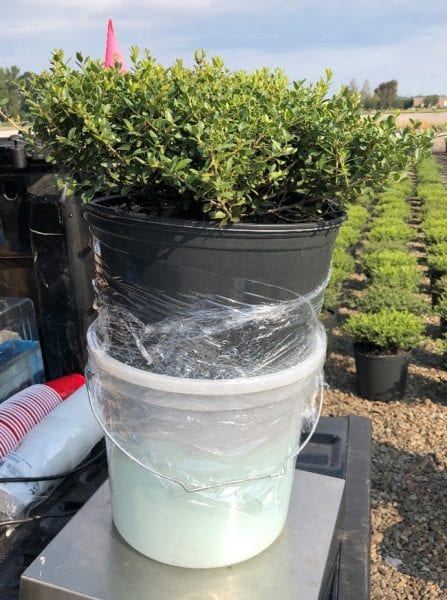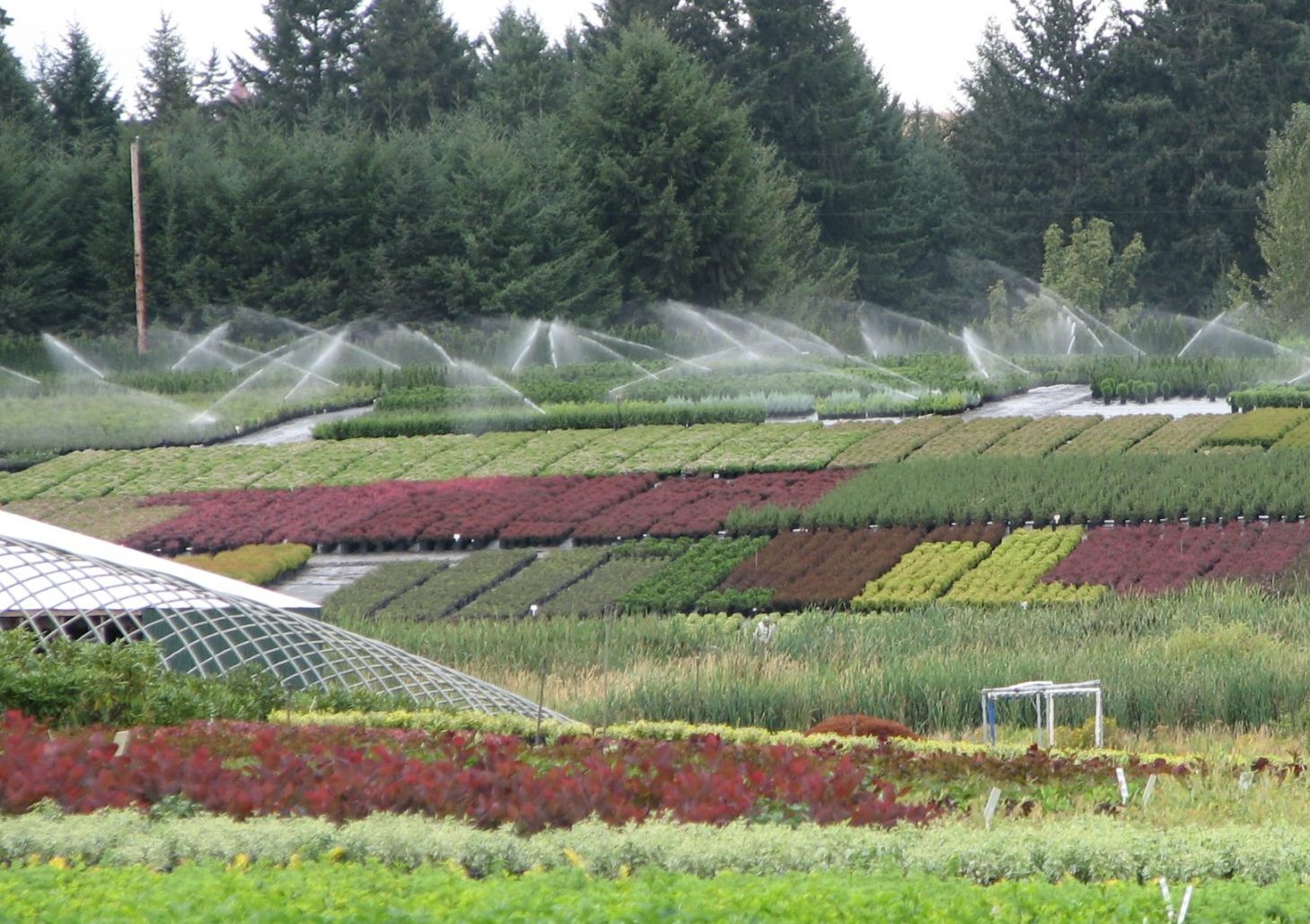Crop Production

For container nurseries, knowing how long to irrigate can be a challenge. Why is this important? Plant growth can be limited when you don’t water long enough. More importantly, if you water too long, pest pressure increases and fertilizer is wasted. Many are surprised to find that watering correctly can results in significant savings.
In 2014, Saunders Brothers Nursery in Virginia reported extensive savings simply by monitoring their irrigation runtimes. Fertilizer, chemical and labor savings were estimated to be between $33,000 and $75,000 across container production at their nursery. How did they make adjustments to their system? They used a simple technique using leaching fractions (LF).

Figure 1. Image by Adam Newby
Leaching Fractions
Monitoring LF is a great way to determine how long to irrigate. To calculate LF, growers divide the amount of water leached from a container by the amount applied.
One suggested method is using a 3-gallon bucket to collect the amount of irrigation applied and the same size bucket to collect the amount leached. Plastic wrap can be used to seal the nursery pot to the bucket (Figure 1). A 15% LF is a good target for most container nurseries. Find complete instructions for calculating leaching fractions here.
Distribution Uniformity
The distribution uniformity (DU) of an irrigation system is also important to check. Low DU means that water is not getting distributed evenly. When uniformity is low, some containers may have a high LF (overwatered) while others have a low LF (under watered). A good goal for uniformity would be >80%.
Irrigation Evaluation
The Auburn University department of horticulture recently began a program to evaluate Alabama irrigation systems. Last summer, five Alabama nurseries with overhead systems were evaluated. To standardize the evaluation, only nurseries growing dwarf yaupon holly in #3 containers were evaluated. Growers were also asked to water on their usual schedules.
Here is what the evaluation found:
- Most nurseries applied between 0.3–0.5 inches.
- All five nurseries surveyed had DU below the recommended 80% (61% to 79%)
- Leaching fractions ranged from 7% to 36%, depending on the nursery.
- Uniformity was a problem for several nurseries. For example, one nursery had a uniformity of 65%. Some containers in the block received 0.1 inches of irrigation while others received 0.7 inches.
Key Takeaways
There is no way to know irrigation efficiency unless growers check. Managing irrigation has the potential to save fertilizer and reduce pesticide applications. Information on measuring DU and LF can be found in Southern Nursery Association’s Best Management Practices: Guide for Producing Nursery Crops.

